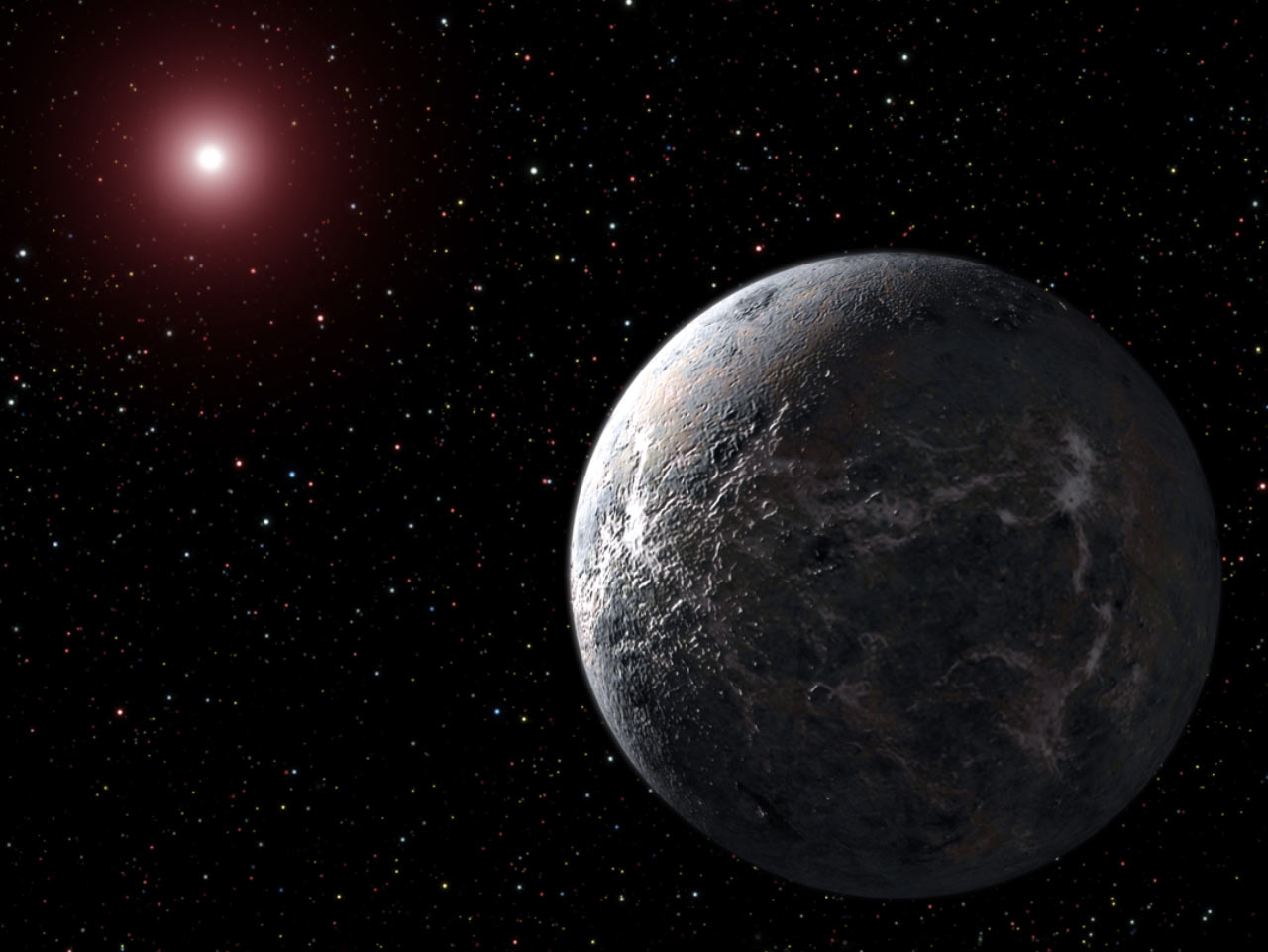Two super-Earths found around the brightest red dwarf star in our solar neighborhood
The Institute of Astrophysics of Andalusia (IAA-CSIC) participates in the discovery of a multiple planetary system around GJ887, a star located 10.7 light years away
Since the discovery, in 1995, of the first planet outside our Solar System, more than four thousand extrasolar planets have been detected. These findings have changed our conception of planetary systems and show the advances in detection capacity. Today the challenge is to characterize these planets and to explore if they contain water or, even, some form of life, a scenario in which the closest exoplanets are most suitable. A work, published today in the journal Science, announces the discovery of two super-Earths and a possible third planet around a neighboring star, which form the closest compact planetary system known.
GJ887, located about 10.7 light years away, is the 12th closest star. It is a red dwarf star, the most common type of star in the Milky Way, which has a mass equivalent to half that of our Sun and an approximate temperature of about 3400 degrees, about 2100 degrees cooler than our star.

"We have found two super-Earths, or planets more massive than Earth, around GJ887", says Eloy Rodríguez, a researcher at the Institute of Astrophysics of Andalusia (IAA-CSIC) participating in the finding. The planets, named GJ887b and GJ887c, respectively have a minimum mass of about four and seven times the Earth's. Both revolve around their star closer than the habitable zone, or region in which the existence of liquid water would be possible on the surface. However, the second planet orbits very close to the inner edge of that area. In addition, we have found indications of the existence of a third super-Earth that, if confirmed, would be within the habitable zone”.
GJ887 thus becomes one of the closest known multiplanetary systems, only behind those of Proxima Centauri and Wolf359, located 4.2 and 7.9 light years away and with two planets detected in each of them. GJ887 is the most compact, with its two planets rotating around the star every 9.3 and 21.8 days, and the third candidate every 51 days.
“Given their minimum mass, they could be rocky super-Earths, but this we do not know for sure. In the absence of a measurement of the radius, which we do not have because the planets do not transit, we cannot determine their average density. In addition, depending on the inclination of the orbit with respect to us, the masses could be much larger and reach the range of the mini-Neptunes, with a higher content of water in their structure", says Pedro J. Amado, researcher at the Institute of Astrophysics of Andalusia (IAA-CSIC) that participates in the work.
A PARTICULARLY QUIET RED DWARF STAR
However, red dwarf stars show a characteristic that could hinder the presence of life on the planets that surround them: they are stars that show much greater surface activity than solar-type ones, with relatively frequent magnetic flares.
In this sense, GJ887 can be especially interesting. Unlike Proxima Centauri and Wolf359, which have great magnetic activity on their surfaces, it seems to be a very calm star. It has been observed for three months with the HARPS spectrograph, one of the most accurate planet-hunting instruments, and archival data from several spectrographs spanning more than twenty years have been used, in addition to photometric observations from the ground and from space. "With all these data we have not detected flares. Even the photometric detection of surface magnetic activity is very weak, which makes this planetary system a very interesting candidate to investigate the existence of rocky planets capable of harboring life", says Eloy Rodríguez (IAA-CSIC).
In addition to the high stability of GJ887, its proximity and high apparent brightness are added, since it is the most massive red dwarf in the solar environment and, therefore, the one with the largest radius. This makes their planets ideal candidates for investigating the possible presence of atmospheres and specific molecules with new-generation instrumentation, such as the James Webb Space Telescope, scheduled for launch in March 2021.
The planets have been found in the framework of the international collaboration RedDots thanks to the Doppler technique, which allows detecting the small movement that the planets produce in their star when rotating around it. In Spain, in addition to the Institute of Astrophysics of Andalusia (IAA-CSIC), Institute of Astrophysics of the Canary Islands (IAC) and the Institute of Space Sciences (ICE) participate.
S. V. Jeffers et al. "A multiple planet system of super-Earths orbiting the brightest red dwarf star GJ887". Science, June 2020.
Instituto de Astrofísica de Andalucía (IAA-CSIC)
Unidad de Divulgación y Comunicación
Silbia López de Lacalle - sll[arroba]iaa.es - 958230532
http://www.iaa.es
http://www-divulgacion.iaa.es

